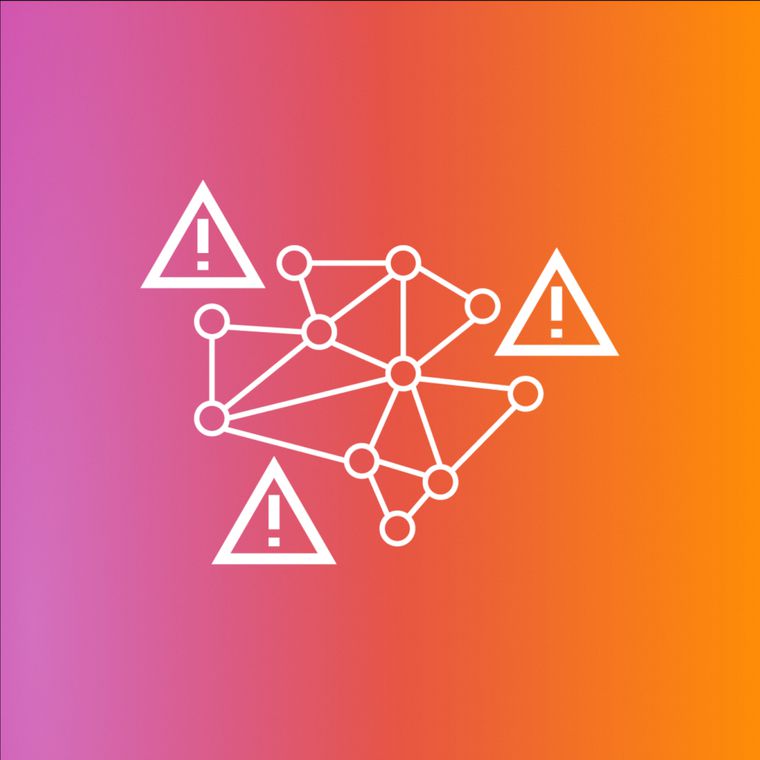Threat Detection Best Practices for Salesforce Security
Best practices for Salesforce threat detection to safeguard your data and mitigate security risks effectively.
September 22, 2025
Security teams must protect customer relationship management platforms where sales data, financial information, and business intelligence converge across integrated systems connecting marketing automation, analytics tools, and communication channels. Attackers target these environments through sophisticated techniques, such as compromised accounts masquerading as legitimate users, voice phishing campaigns exploiting administrative tools, and malicious OAuth applications harvesting data through approved integrations. These threats blend into normal CRM operations, making detection particularly challenging without specialized behavioral monitoring.
For instance, organizations need comprehensive visibility across their Salesforce deployments to identify anomalies before data exfiltration or customer information theft occurs. Advanced threat detection extends beyond basic authentication to analyze access patterns, application behaviors, and administrative activities that indicate potential security incidents. This guide provides five proven practices that enhance threat detection capabilities.
Why Cybercriminal Groups Target Salesforce Platforms
Salesforce platforms concentrate business-critical data and trusted operational channels, making them prime targets for sophisticated attackers seeking comprehensive organizational intelligence.
These platforms contain strategic customer information, sales forecasts, and business relationships accessible through a single compromised account. Enterprise implementations typically integrate with dozens of business applications, creating expanded attack surfaces through API connections, OAuth applications, and data synchronization tools that each represent potential entry points for malicious actors.
Modern attackers exploit Salesforce's legitimate administrative functionality to avoid detection. Voice phishing campaigns obtain credentials, then deploy official-seeming tools for scaled data extraction. These targeted campaigns bypass traditional security controls because they operate within already-authenticated environments using authorized applications.
Security incidents on CRM platforms trigger cascading impacts, including lost customer trust during breach notifications, regulatory scrutiny for data protection failures, and competitive disadvantage from stolen business intelligence. The convergence of centralized customer data, extensive third-party integrations, and critical sales processes transforms these environments into high-value targets where a single compromise yields enterprise-wide intelligence.
Why Traditional Defenses Fall Short
Legacy security tools designed for on-premises environments cannot adequately monitor cloud-based CRM platforms. The network monitoring provides no visibility into encrypted HTTPS traffic between users and Salesforce.
Endpoint protection systems have limited insight into web application interactions occurring entirely within browser sessions. Signature-based detection cannot identify attacks using legitimate credentials and administrative tools. Security teams remain blind to insider threats, account compromises, and data harvesting occurring through standard interfaces.
Salesforce's cloud architecture eliminates the network perimeter traditional monitoring tools require, necessitating API-based monitoring approaches instead. The scale and velocity of CRM activity in enterprise environments overwhelms manual analysis as large organizations generate millions of events daily across thousands of users. Additionally, most security teams lack specialized expertise in Salesforce-specific threat patterns, creating configuration gaps that sophisticated attackers exploit systematically.
Here are five of the best threat detection practices for Salesforce security:
1. Deploy Behavioral Monitoring for User Activity Patterns
Behavioral monitoring establishes baseline activity patterns for individual users then detects anomalous behaviors indicating account compromise or insider threats: this approach identifies subtle deviations that human analysts miss.
AI-driven systems track login timing, data access patterns, export volumes, and geographic locations for every user. When accounts deviate from established patterns, automated alerts trigger investigation. For instance, a sales director typically accessing 10-15 customer records daily during business hours from their corporate office creates a baseline. The system flags unusual activity when the same account suddenly exports 500+ customer records at 2 AM from an unfamiliar location, even though access uses valid credentials.
This monitoring significantly reduces false positive rates compared to rule-based systems while detecting sophisticated attacks bypassing traditional controls. Security teams gain visibility into credential abuse, data harvesting attempts, and insider threats through continuous pattern analysis that adapts to legitimate business changes while maintaining sensitivity to genuine anomalies.
2. Integrate Real-Time Event Monitoring with SIEM Systems
Salesforce generates massive volumes of audit logs requiring real-time analysis and correlation with broader security intelligence to detect coordinated attacks across multiple systems.
Configure Salesforce's Real-Time Event Monitoring to stream security-relevant events directly into existing SIEM platforms using vendor-specific integration pathways. This enables correlation of CRM activities with identity provider logs, email security events, and network behavior. When attackers compromise employee credentials through phishing, related events appear in email systems, identity providers, and Salesforce simultaneously. SIEM correlation detects these patterns and triggers automated response workflows that isolated monitoring would miss.
Integrated monitoring improves Mean Time to Detect (MTTD) for multi-system attacks while providing comprehensive context for investigation decisions. Security teams identify lateral movement attempts, coordinated data extraction campaigns, and account compromise chains through centralized visibility that connects disparate security signals into coherent threat intelligence.
3. Implement Advanced OAuth Application Monitoring
Malicious OAuth applications obtain extensive API access through user approval workflows, then operate undetected while extracting information using legitimate application permissions: continuous monitoring prevents large-scale data theft through compromised integrations.
Deploy monitoring tracking data access patterns, API usage frequency, and permission utilization for every connected application. Advanced analytics identify applications conducting unauthorized data extraction or exhibiting behavioral changes suggesting compromise. A productivity application approved for calendar integration suddenly accessing customer records and generating bulk exports triggers immediate alerts. Security teams investigate potential application compromise before extensive data loss occurs.
OAuth monitoring extends beyond simple permission reviews to continuous behavioral analysis. Applications deviating from established patterns face automatic suspension while security teams investigate, preventing extended campaigns where attackers maintain persistence through approved integrations that bypass user-level controls.
4. Establish Automated Threat Hunting Workflows
Manual threat hunting proves impossible at enterprise scale where millions of daily events require analysis. In comparison, automated workflows continuously search for advanced persistent threats using machine learning trained on Salesforce attack patterns.
Configure hunting algorithms to detect coordinated activities across multiple accounts suggesting organized campaigns. This includes synchronized access to customer records by accounts that don't typically collaborate or systematic exploration of administrative functions by recently compromised accounts. Automated detection identifies privilege escalation attempts, lateral movement patterns, and data staging activities that manual analysis would never discover in time.
These workflows operate continuously without human intervention, surfacing high-confidence threats for investigation while filtering noise that overwhelms traditional approaches. Security teams focus on genuine incidents rather than drowning in false positives, dramatically improving response effectiveness while reducing analyst burnout.
5. Configure Compliance-Driven Monitoring and Reporting
GDPR and HIPAA mandate specific technical safeguards requiring documentation that many organizations cannot provide during regulatory audits. The automated monitoring generates audit-ready evidence while ensuring continuous compliance.
Implement systems automatically tracking every personal data access, generating monthly permission review reports, and documenting security testing activities with timestamped logs. Compliance dashboards display real-time adherence to regulatory requirements including data minimization practices, access control effectiveness, and incident response metrics. Auditors receive comprehensive evidence packages demonstrating proactive security measures rather than scrambled documentation attempts during investigations.
This approach transforms compliance from reactive burden to proactive advantage. Organizations maintain continuous readiness for regulatory scrutiny while using compliance requirements to justify security investments that protect against sophisticated threats targeting customer data.
Implementing Enterprise-Grade Salesforce Security
Modern CRM platforms require specialized threat detection designed for cloud application security rather than traditional infrastructure monitoring. Recent attacks demonstrate how adversaries exploit trusted administrative tools and API access for lateral movement and data exfiltration appearing as normal operations.
Organizations implementing comprehensive threat detection report significant improvements in identifying sophisticated attacks before breaches occur. The combination of behavioral monitoring, automated threat hunting, and integrated SIEM correlation provides security teams with visibility necessary to detect subtle attack patterns hidden in massive volumes of legitimate activity. These capabilities transform Salesforce from potential vulnerability to protected asset through continuous analysis that adapts to evolving threats.
Security leaders must prepare for operational reality where CRM platforms face persistent threats combining technical exploitation with social engineering. This requires security operations centers equipped with cloud-native monitoring capabilities, threat intelligence focused on SaaS attack patterns, and response procedures designed for API-driven environments where traditional controls provide limited protection.
Ready to enhance your Salesforce security with advanced behavioral threat detection? Get a demo to see how Abnormal can protect your valuable business relationships and customer data while streamlining security operations.
Related Posts
Get the Latest Email Security Insights
Subscribe to our newsletter to receive updates on the latest attacks and new trends in the email threat landscape.


